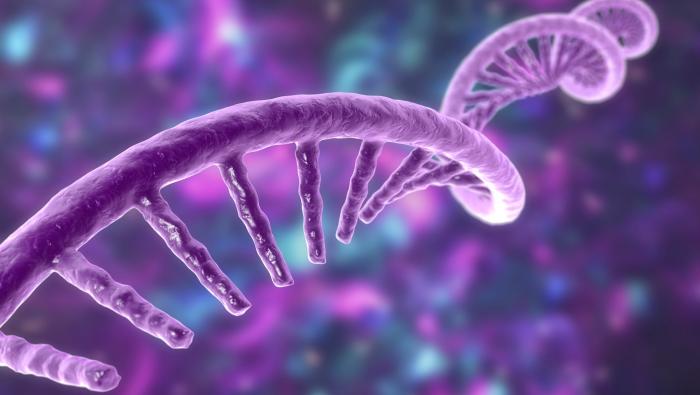A New Type of RNA Discovered in a Parasite May Help Treat Serious Infectious Diseases

Understanding the mechanisms of RNA molecules allows scientists to develop effective treatments for multiple diseases, including some which are currently incurable. In the process of aiming to find a treatment, sometimes scientists are surprised to discover new RNA types that were previously unknown to science!
A groundbreaking study led by Prof. Shulamit Michaeli from the Bar-Ilan University Faculty of Life Sciences is one of these rare occasions. While trying to develop a treatment for leishmaniasis - a terrible skin disease – Professor Michaeli’s team discovered a new type of RNA that plays a role in the genetic control mechanisms of the Trypanosoma brucei parasite and its development. This new knowledge offers the potential of developing RNA-based therapies for sleeping sickness and similar infectious diseases caused by parasites from the same family.
Furthermore, the discovery of this new type of RNA motivates scientists to look for it in other organisms as well, which may have many positive implications.
Meet Trypanosoma brucei - the parasite that causes sleeping sickness
The Trypanosoma brucei parasite is a unicellular organism that causes sleeping sickness (African trypanosomiasis), a disease that affects humans and cattle and, if left untreated, is fatal.
The Trypanosoma brucei parasite is a protist – an ancient, unicellular organism with a nucleus and organelles similar to those that characterize more complex multicellular organisms. During its life cycle, this parasite passes between two hosts – to and from the digestive tract of blood-sucking insects and the blood of mammals. Other parasites of the same family cause other infectious diseases in humans, such as Chagas disease and Jericho Buttons disease (leishmaniasis), which affects several hundred people in Israel every year.
In recent decades, the trypanosoma brucei parasite has become a "model species" for the research of parasites of its genus (Kinetoplastida). because it is easily reproduced in the laboratory and can be genetically manipulated. As a result, its gene functions, expressions, and genetic regulation mechanisms have been thoroughly studied, and helped contribute to the biological understanding of underlying genetic processes. Following the recent quantum leap in RNA research backed by technological advances in sequencing and data analysis capabilities, additional processes and genetic phenomena that had not been known to science have been revealed t this organism.
One such discovery, which had eluded researchers for many years, is what occurred in Prof. Michaeli’s laboratory. In order to appreciate their findings, it is first necessary to understand the importance of RNA molecules in general, and of non-coding RNA molecules in particular.
Non-coding RNA
RNA molecules are generally known for their role in the transcription of genetic material in the DNA for the purpose of producing proteins, which are the body’s building blocks. These molecules are called "coding RNA", versus non-coding RNA molecules. As human genome research evolved, scientists discovered that many of these non-coding RNA molecules play significant roles in gene regulation processes and are even capable of affecting coding RNA molecules. Non-coding RNA molecules are divided into two types based on their size:
1. Long non-coding RNA molecules (LncRNA)
These RNA molecules, consisting of more than 200 base acids (nucleotides – the sequence of letters forming the RNA), take part in genetic control mechanisms and regulate transcription processes that affect how cells are sorted by different body tissues and how different genes are expressed in response to varying conditions. However, the functional diversity of these molecules is not yet fully known to science and has in fact only begun to be studied in recent years.
2. Small non-coding RNA molecules (miRNA)
Small microRNA molecules are microscopic molecules only 22-nucleotide long that are also used for the regulation of gene expression. These molecules know how to bind to messenger RNA molecules and cause their degradation – thereby preventing the RNA molecules from producing proteins – a process which is an essential part of gene regulation, the mechanism that determines which genes will actually be expressed in an organism
The trypanosoma riddle: missing microRNA
Different microRNA types have been discovered in all eukaryotes, whose cells have a nucleus and organelles, ranging from unicellular organisms to humans. But the trypanosoma parasite – the subject of this study - does not have any of them. Given the absence of these molecules in the trypanosoma, the question that presents itself is: What mechanism enables the prevention of proteins production in the trypanosoma? Or in other words, how does its genetic regulation take place? This is one of the questions the researchers wanted to answer.
To solve this riddle, the researchers looked for a lead in the genetic regulation processes associated with the shape changes typical of this parasite. When the trypanosoma passes from a fly to a human, it changes its shape, which entails fundamental changes in its RNA composition. Understanding the mechanisms behind this parasite’s shape changes, the researchers estimated, could allow them to understand its genetic regulation mechanisms. Thus, the researchers embarked on a quest to search for non-coding RNA linked to the parasite’s regulation mechanisms, the discovery of which could solve the riddle.
RNA sequencing and analysis
To investigate the structure of non-coding RNA, the researchers isolated the RNA in the laboratory from billions of trypanosoma cells by extracting, separating, and chemically staining RNA acids. The researchers then performed what is known as "RNA sequencing library preparation", a multi-step laboratory process in which the RNA molecules undergo reverse transcription into DNA and are then amplified thousands of times to allow for their analysis, following which they are sequenced by an Illumina NextSeq system - one of the most advanced genetic sequencing technologies – which allows for accurate, fast, and relatively inexpensive DNA sequencing compared to other methods.
The researchers processed the raw data they had obtained, namely sequences of tens of millions of characters, using dedicated computer programs, and mapped RNA sequences based on the trypanosoma model outlined in previous studies, which encompassed all known RNA types in this unicellular organism, as well as their location in the cell.
The researchers focused on the search for an RNA molecule that affects the ribosome, the cell's protein production mechanism, to examine whether the genetic control processes of this organism occur at the ribosome level.
When the researchers examined the findings, they were amazed to discover dozens of types of small, non-coding RNA molecules that had not been discovered earlier. The researchers examined whether these molecules could explain how this parasite’s genetic regulation mechanism works.
Results – discovery of a new type of small RNA molecules
The researchers reported the discovery of 62 non-coding RNA molecules that had not been known until then. Although these molecules have been found to be very common in cells, their mechanisms of action are still a mystery to science.
In this study, the researchers focused on two of the molecules that had been identified, which they called TBsRNA-33 and TBsRNA-37. They discovered that these RNA molecules come out of the cell nucleus with the ribosome and travel into the cell cytoplasm, where they bind to the messenger RNA.
The researchers revealed a new genetic mechanism – and showed that these non-coding RNA sequences can control the messenger RNA and not only lead to its suppression, but also catalyze its activity – a functionality that had been previously unknown. In other words, the study not only discovered new RNA molecules, but also revealed a new and unique function.
In addition, when the researchers examined the differences between the expressions of non-coding RNA in the parasite’s two life stages, they discovered 22 RNA molecules that are involved in this process. Of these, 15 were extensively expressed in the insect host stage, and 7 were extensively expressed in the mammalian host stage. These discoveries are of great importance, because understanding the mechanisms behind the parasite’s shape changes is the first step towards developing interventions that will render the parasite harmless.
The bottom line
Non-coding RNA is used to control gene expression in many organisms – from bacteria to humans. This study, which discovered dozens of non-coding RNA types that had previously been unknown to science, is an important first step in a long journey toward fully unveiling the diversity of RNA molecules in the Trypanosoma parasite and their mechanisms of action.
The study revealed dozens of hitherto unknown small non-coding RNAs, and identified amongst them a new type of small non-coding RNA acting upon the ribosome – which in later studies was acknowledged and named rancRNA - Ribosome-Associated non-coding RNA.
Focusing on the RNA mechanisms involved in the control of this parasite’s development stages may provide insights and tools that will be used to develop drugs against it and against other parasites from the same family. But the possible applications of these discoveries extend far beyond that: the RNA mechanisms that have been uncovered in this study may also exist in the cells of different organisms and help explain complex heredity mechanisms, as well as previously unknown biological mechanisms. Such information would be invaluable for the development of advanced vaccines, drugs, and diagnostic methods.
Last Updated Date : 16/01/2023








